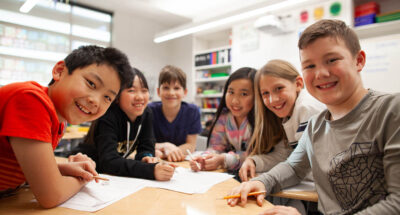
Truth or Tale?
Students share real or made-up things about themselves and discuss the merits, challenges, and nuances of honesty.

Students share real or made-up things about themselves and discuss the merits, challenges, and nuances of honesty.
Students will:
Take a moment to check in with your own beliefs and relationship with honesty.
Some studies show that only teaching about the negative consequences of lying may not be as effective as also teaching about the positive consequences of honesty. This practice focuses on a holistic view of honesty and lying.
Inspired by content in The Truth About Lying by Dr. Victoria Talwar
Written by Jenna Whitehead, Ph.D., Simon Fraser University
Research has shown that social norms, modeling truthfulness, and discussing the merits of honesty all influence students’ tendency to be truthful. Having open discussions to understand honesty, its nuances, and how to balance it with tact and compassion can help create a classroom where honesty is the norm.
Studies have also found that teaching students about the positive outcomes of honesty, in addition to alongside the negative consequences of lying, is more effective in promoting honesty than focusing only on the negative impacts of dishonesty.
Dishonesty is a natural part of healthy development in children, emerging alongside their growing ability to understand others’ perspectives and regulate their emotions and behaviors. At the same time, honesty is a fundamental human inclination–we seek trustworthy relationships with others.
When we support young people in cultivating their honesty, they build a reputation of trustworthiness, form stronger relationships, and experience greater health and mental well-being.

Are you ready to build a kinder, happier school where everyone belongs? Join Greater Good Educators! Explore the science of well-being in a supportive community of educators from around the world. Registration is now open for the 2025-2026 school year!
Comments